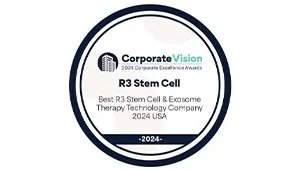What Is Stem Cell Therapy and How Does It Work?
Stem cell therapy is a regenerative treatment designed to heal, repair, and restore damaged tissues by using the body’s most fundamental building blocks, stem cells. These unique cells have the ability to transform into various cell types such as bone, cartilage, muscle, blood, and nerve tissue.
When injected into an injured or diseased area, stem cells work to:
- Stimulate the body’s natural repair mechanisms
- Reduce inflammation
- Promote tissue regeneration
- Improve overall function and mobility
The stem cells used in therapy are often derived from donated umbilical cord tissue, offering a potent and ethical source of treatment without surgery or long-term medication.
Conditions That May Benefit from Stem Cell Therapy

One of the key strengths of stem cell therapy is its wide range of applications. While results may vary, stem cell treatments have been used to support healing in:
- Chronic joint pain and arthritis (knees, hips, shoulders)
- Sports injuries and tendon damage
- Degenerative disc disease and back pain
- Autoimmune disorders
- Cardiovascular diseases
- Diabetes-related complications
- Neurological conditions like Parkinson’s and MS
By promoting natural tissue regeneration, many patients experience reduced symptoms, improved mobility, and a better quality of life.
Why Stem Cell Therapy May Be More Cost-Effective Than You Think
Many people hesitate due to the perceived high cost of regenerative treatments. However, when comparing stem cell therapy to traditional treatments, the value becomes clear.
Traditional Treatments vs. Stem Cell Therapy
| Treatment Type | Focus | Duration of Relief | Costs Over Time |
|---|---|---|---|
| Medications | Symptom relief only | Short-term | Ongoing & recurring |
| Cortisone injections | Temporary pain relief | Weeks to months | Repeated expenses |
| Surgery (e.g., knee replacement) | Invasive & costly | Recovery + rehab needed | Tens of thousands of $$ |
| Stem Cell Therapy | Targets root cause | Long-term potential | Often one-time cost |
Instead of managing pain with temporary fixes, stem cell therapy addresses the underlying damage, which may lead to lasting improvements and fewer long-term healthcare expenses.
What Affects the Cost of Stem Cell Treatment?
The cost of stem cell therapy can vary depending on several factors, including:
- Type and severity of condition
- Number of treatment sessions required
- Location and clinic expertise
- Use of stem cells alone or combined with PRP (Platelet-Rich Plasma)
- Treatment site (joints, spine, soft tissues, etc.)

Is Stem Cell Therapy Covered by Insurance?
As of now, most stem cell therapies are considered elective or investigational by insurance companies and are not covered. However, the long-term benefits and cost savings—by potentially avoiding surgery, medications, or hospital stays, make it a compelling option for many patients.
Is Stem Cell Therapy Right for You?
If you or a loved one is struggling with chronic pain or a degenerative condition and are looking for non-surgical, drug-free alternatives, stem cell therapy could be a transformative solution.
You may be a candidate if you:
- Have not found lasting relief from conventional treatments
- Are trying to delay or avoid surgery
- Want a regenerative, natural healing approach
- Have a condition that affects your mobility, comfort, or quality of life
Final Thoughts: Is It Worth It?
Yes: if you’re looking for long-term relief, fewer side effects, and improved function, stem cell therapy can be well worth the investment. While upfront costs may seem higher, the lasting benefits and non-invasive nature of the treatment often outweigh ongoing traditional care expenses.
Before making a decision, always consult with a trusted, experienced provider to understand:
- Your candidacy for treatment
- Expected outcomes
- Cost structure and financing options
Frequently Asked Questions (FAQs)
Yes, when performed by experienced professionals using ethically sourced stem cells, the procedure is generally safe with minimal side effects.
Results vary by individual and condition but many patients report improvement within weeks to a few months after treatment.
Some patients need only one session, while others may benefit from multiple treatments depending on their condition and goals.
No, stem cell treatments are minimally invasive and typically involve injections—no major surgery or hospital stays.
Contact US
In general, prices can range from a few thousand dollars for single joint injections to higher amounts for comprehensive treatment plans for systemic conditions.
Pro Tip: Always consult with a qualified stem cell provider to receive a personalized treatment plan and transparent cost breakdown.













Sorry, the comment form is closed at this time.